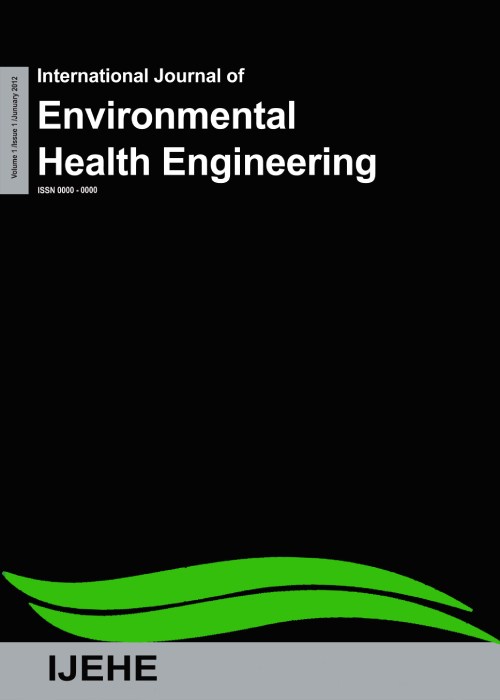فهرست مطالب
International Journal of Environmental Health Engineering
Volume:10 Issue: 1, Feb 2021
- تاریخ انتشار: 1399/11/13
- تعداد عناوین: 2
-
-
Pages 1-5Aims
The Iranian city of Sari with a green nature has great environmental importance, especially in ecotourism. Thus, the proper management of medical wastes is necessary to maintain a sustainable environment. This study is aimed to determine the quantitative and qualitative wastes in the hospitals of Sari.
Materials and MethodsThis was a cross-sectional study using a descriptive-analytical approach to analyze the infectious and noninfectious wastes of four hospitals in Sari. The data collection instrument was a checklist that was completed on visits to hospitals and observation of cases. Data analysis was performed using Excel and R software programs.
ResultsThe average quantity of the total waste produced in hospitals was 218, 482, 19.5, and 17 kg/day for infectious, household, sharp-cutter, and pharmaceutical wastes, respectively. The rate of hospital waste production for various types of infectious, household, sharp-cutter, and pharmaceutical wastes equaled 1.15, 2.13, 0.09, and 0.28 kg/bed, respectively.
ConclusionDue to the high percentage of infectious wastes, despite considerable efforts to separate wastes, there are still problems in the hospitals that require more attention from the authorities, as well as the incorporation of new methods to render waste safe before it leaves the hospital.
Keywords: Hospital waste, Iran, qualitative, quantitative analysis, Waste Management -
Pages 8-13Aim
The aim of this study is to determine the benzene, toluene, ethylbenzene, and xylene (BTEX) concentration levels in and around the fuel station and its harmful health effects in the city of Dammam and Al Khobar, Saudi Arabia.
Materials and MethodsForty fuel-dispensing facilities were randomly selected on the basis of three different areas: residential, traffic intersection, and petrol pump locations (refueling stations). Samples were collected using coconut shell charcoal cartridges, and the portable ambient analyzer was used for measuring BTEX concentration.
ResultsResults shows that the average concentration of BTEX levels around fuel stations was 10.30, 4.09, and 2.47 ppm, respectively. All mean concentration values of BTEX around residential, traffic intersection, and fuel stations are exceeding the limits of air quality standards values (P < 0.01). The mean concentration of BTEX around the residential area, side street, and direct street was as follows: benzene 8, 12.2, and 11.5 ppm; toluene 2.5, 5.95, and 3.37 ppm; and xylene 2, 2.13, and 2.7 ppm. Hazard quotient was >1, which showed that carcinogenic probability has increased those exposed to this toxic chemical.
ConclusionValues for BTEX were greater than those found in the neighboring residential area of the city and even 100 m away from the fuel station which can have a negative impact on the health of several residences. The environmental contamination associated with BTEX in petrol fuel stations impulses the necessity of preventive programs to reduce further air quality deterioration and reduce the harmful health effects.
Keywords: Air, benzene, gasoline, pollution, xylenes


